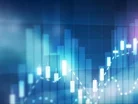Eurozone growth hit seven-year high at the end of 2017, according to new figures

The eurozone economy closed 2017 by achieving its best growth for nearly seven years, a survey released on Thursday revealed.
A surge in manufacturing productivity across all major European economies, along with accelerated services, contributed to IHS Markit’s Final Composite Purchasing Managers’ Index increasing to 58.1 in December.
This was a significant improvement from the 57.5 figure in November and the highest number since February 2011 as fourth-quarter economic growth stood at 0.8%.
See also:
- Business Chief magazine, Europe edition - January issue NOW LIVE!
- Vodafone and Ericsson conduct the UK's first successful 5G test in London
- Customer-defined disruption – the Spreadshirt story with CEO Philip Rooke
"A stellar end to 2017 for the euro zone rounded off the best year for over a decade, continuing to confound widely held fears that rising political uncertainty would curb economic growth," said Chris Williamson, chief business economist at IHS Markit.
Employment is also on the up on the continent, with companies hiring staff at a growth rate unmatched in the last 17 years and unemployment dropping to 8.8%.
The signs are that such upward momentum will continue in 2018, with IHS Markit's composite new orders index climbing to 58.0 last month - its highest since July 2007 - from 57.3.
- What does the EU’s AI Act mean for your company?Technology
- EU pay transparency rules are a wake-up call for the UKHuman Capital
- How companies can prepare for new EU pay transparency rulesLeadership & Strategy
- EU and JUMEME inaugurate new solar-powered mini-grid in Kagera RegionLeadership & Strategy



